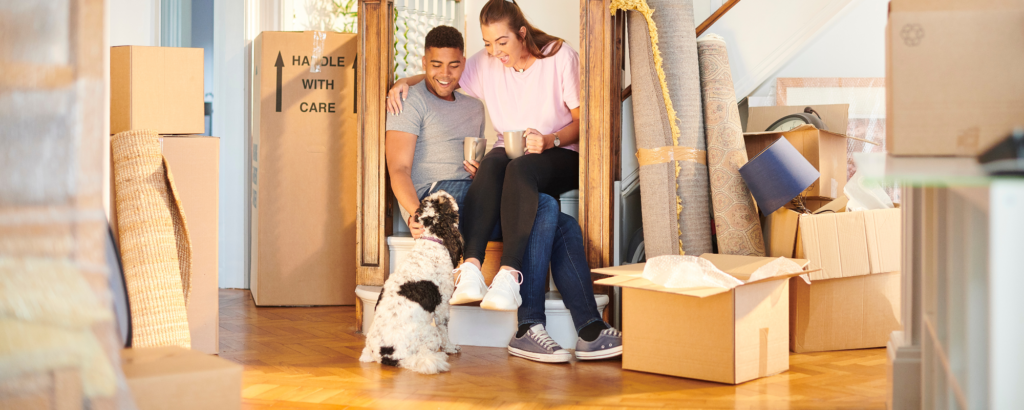Moving into a new house can be an exciting chapter in any couple or family’s life. New surroundings and neighbourhoods are something to look forward to. But for a four-footed friend, moving house could be a stressful experience.
Even the most well-behaved dog can suddenly transition from a happy-go-lucky pup to an anxious pooch when their comfy home environment is disrupted.
In this article, we look at how to help your dog best adjust to their new home environment, starting from even before the move until after – and how to spot a stressed-out pup who might need extra TLC during the transition.
Common dog concerns when moving to a new house
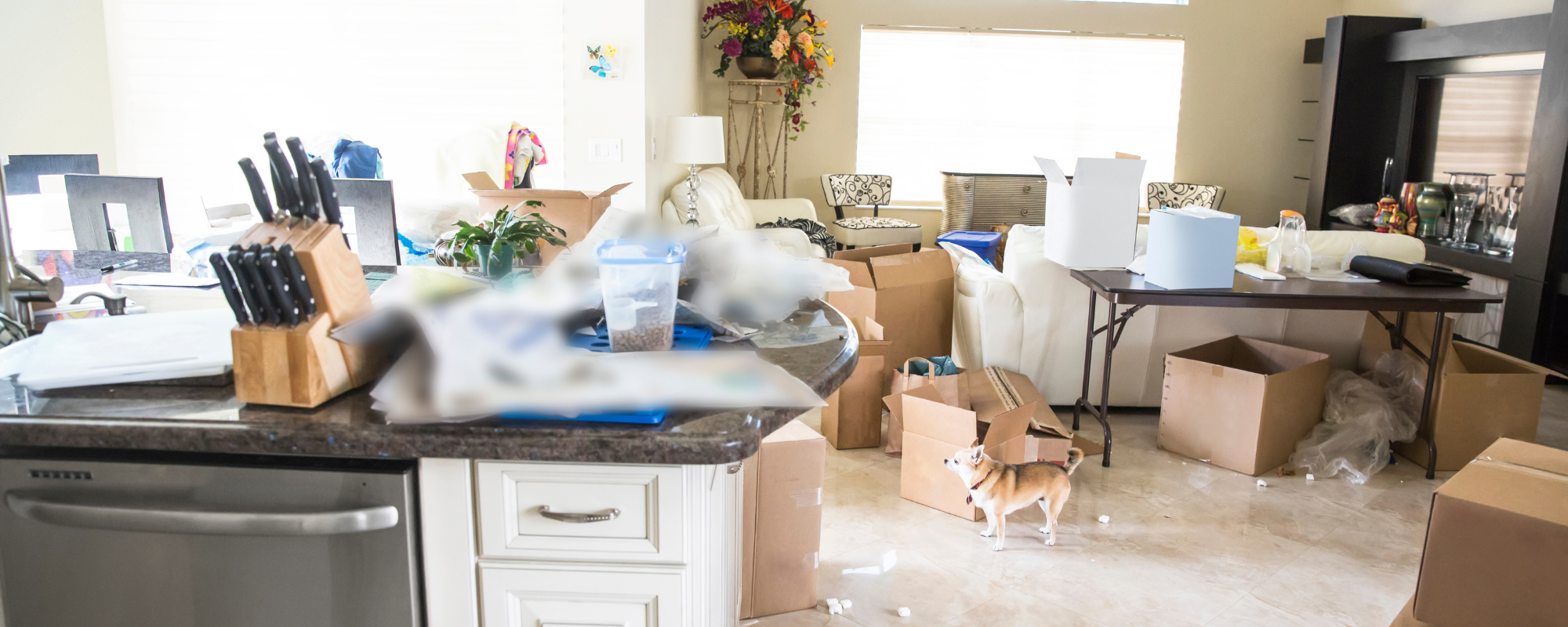
The first thing that any dog owner needs to understand is that your dog will pick up on any stress you might be feeling about moving house.
There is scientific proof of this as well: A study by Sweden’s Linköping University revealed that dogs’ stress levels can significantly be impacted by their owners.
Therefore, if you are stressing about a house move, your beloved dog will feel it soon enough.
It is essential to reduce stress of your own, as this could also help your dog calm down.
However, if your dog is showing any of these signs (before or even after moving to your new house), you must take steps to calm his anxiety:
Excessive barking
Panting
Drooling
Panting
Any destructive behaviour that he doesn’t usually show
“Accidents” in the house, even if your pet is adequately toilet-trained
Chewing on items in the home, such as sofa legs or wooden frames
General restlessness
Yawning (when he is not tired)
Loss of appetite
These are just some symptoms of a stressed pup to look out for, but keep an eye on any other behaviours he doesn’t usually have.
Remember that one of the best ways to ensure your dog settles quickly into his new home environment is to maintain a calm atmosphere at home – starting before the move.
Start prepping for moving house with your dog to get him ready for a new environment
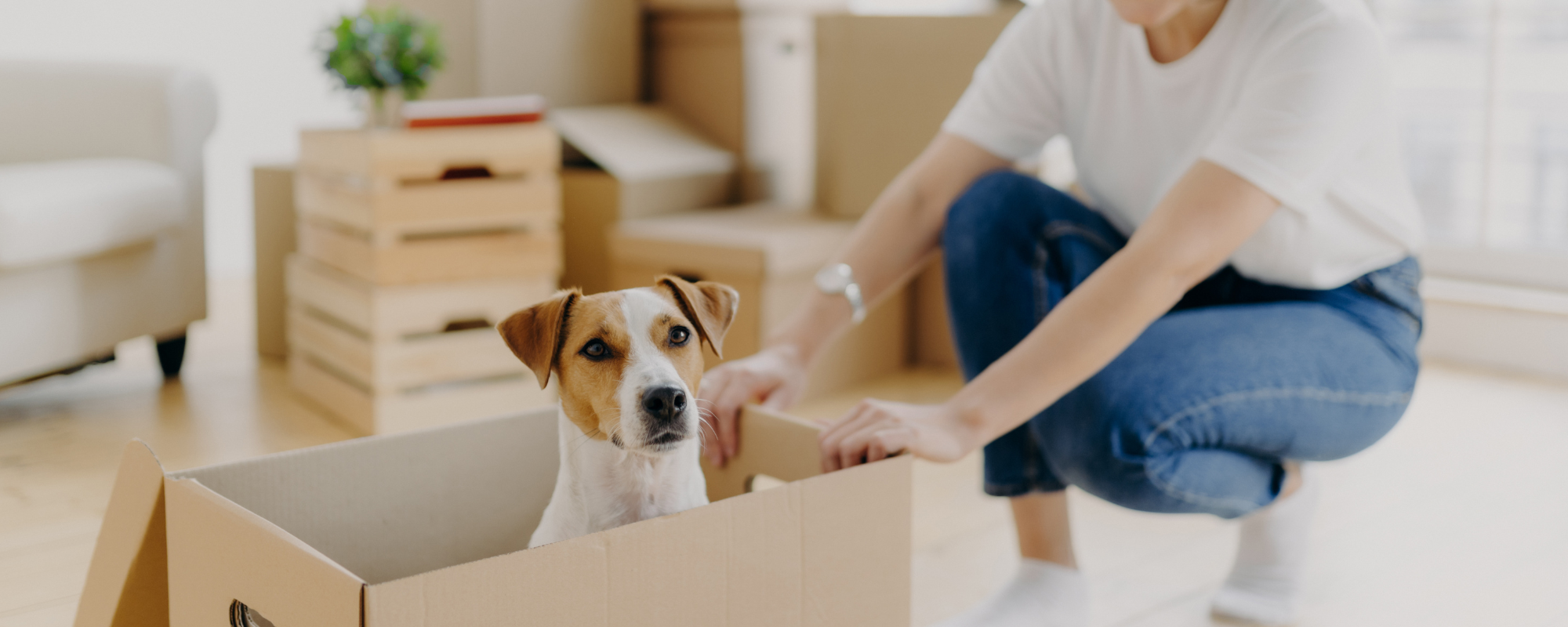
Want to begin a gentle transition to the day of your move? Here are a few tips that you could consider to plan ahead and calm your dogs’ anxiety before the big move – even a few weeks before the big day.
1. Stick to your dog’s usual routine
To limit disruption as much as possible, you must follow the routines that your dog is used to.
Most dogs will catch on if there are any disruptions at home, so ensure you keep your dog’s routine as much as possible. Stick to his walking schedule, feeding times, and any other routines that he is used to.
2. Ensure that all health checks are in order before the move
If your new home is closer to another vet, getting your dog registered and chipped with that branch might be a good idea. This is also a good time to introduce your dog to his new vet, as this will create some familiarity and ensure he doesn’t get stressed when seeing a new caregiver.
3. Show your dog around in his new neighbourhood
Introducing your dog to his new “stomping ground” can be a fun and rewarding experience, especially if there are parks nearby where you will be walking or any other points of interest.
So, take your dog for walks in the area and help him settle into exploring it.
4. Visit your new space if possible
If you can show your dog where your new house will be, give him a gentle introduction, even if it is just walking past or pausing to show him the new house.
There is no need to make a big fuss about the process: Just a gentle nudge to show him where he will live soon, even if he doesn’t understand it completely.
5. Introduce your dog to a crate if you will be using it to move him on moving day to the new house
Make the crate part of your prep by getting your pet used to it. Make it comfortable with a special blanket, toy, or pillow. This will help your dog associate it with a place of comfort, so allow him to explore it or even sleep in it if he likes.
When the big moving day comes, he will be less likely to stress about taking his place in his new “safe space,” especially if he gets rewarded for good behaviour!
Get ready for the big move
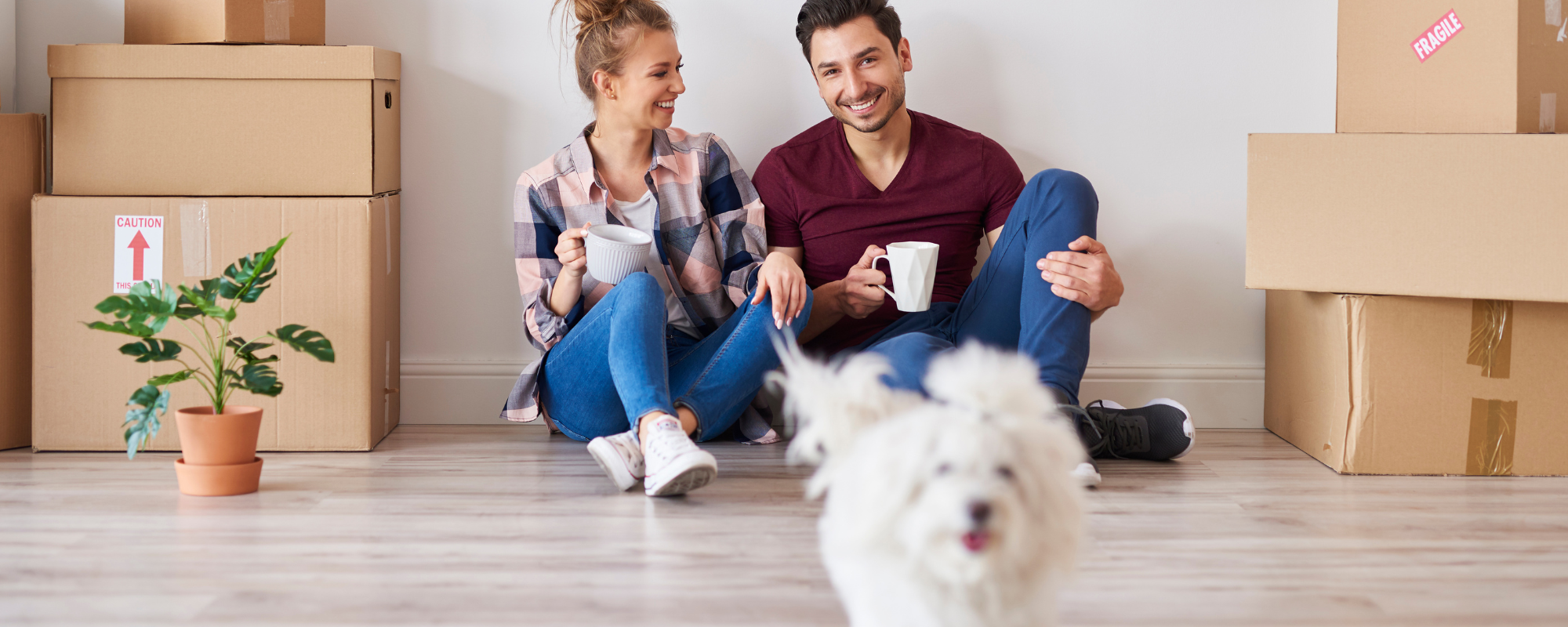
To keep your dog calm and relaxed, you must ensure that the packing process doesn’t cause any stress for your pup.
Here are some tips to keep in mind:
1. Create a positive association with moving supplies
Packing tape, bubble wrap, boxes, and other packing supplies might be distractions for dogs – as potential toys or as foreign objects that cannot be trusted.
Ensure that you do not cause any stress for your pet by letting him sniff items to get used to them. Keep smaller items out of reach, though, as some might pose choking hazards you would best want to avoid.
2. Decide your strategy while you pack boxes
If your dog is allowed inside your current home, he might be curious about what you are doing and sniff around to discover what is happening.
This could be a time-consuming distraction and cause some frustration.
In this situation, it’s worth calling on a trusted friend to look after your pup while you pack. If your dog loves them and enjoys spending time with them, it will feel like a bonus play date, not punishment.
3. Save your dogs’ toys and other items until the last
This is one of the most critical steps for your packing. You do not want to stress your dog out by clearing out all of his precious toys, blankets, and water bowls, so keep these items for last.
You can save some for the crate you will be taking him in (if he is small enough) or keep a couple of items close in the car if you take him to his new home without a crate.
Moving day tips

When the big day arrives, keeping your dog calm and at ease with the world is important.
Here are a few tips to keep in mind.
1. Keep your pup in a separate room when the movers arrive
Have some of his favourite toys and comfort items, together with his water bowl and food bowl, in the room with him, and ensure the movers know that they must not disturb. Otherwise, you might have a stressed, tired dog on your hands when you need to load him into the car.
If his dog bed is easy to carry around, this can be kept in the room to keep him comfortable.
2. Have your dog’s crate ready once it is time to move him to the car
Once you say goodbye to your old house and head to your new address, you can gently move your dog and his crate to the car.
Ensure that loud noises at this stage are limited, making the trip stress-free.
3. Alternatively, consider calling on a family member to take care of your pet
Moving day can be stressful, so if your pup might be more at ease being taken care of by a family member, this could be a better alternative.
This will keep them away from moving chaos and make the transition to their new location easier.
Remember, your dog might be confused if they are not taken back to their previous home when the move is done, so gently spend time with them once everyone is at the new home.
Snuggle with them, give ear scratches and slowly take them around the house to show them around. There might still be boxes and other items standing around, so ensure there is a special spot for them to relax. If a new toy or two is waiting for them on your dog’s bed, even better!
How to Help Your Dog Adjust After Moving Into a New Home
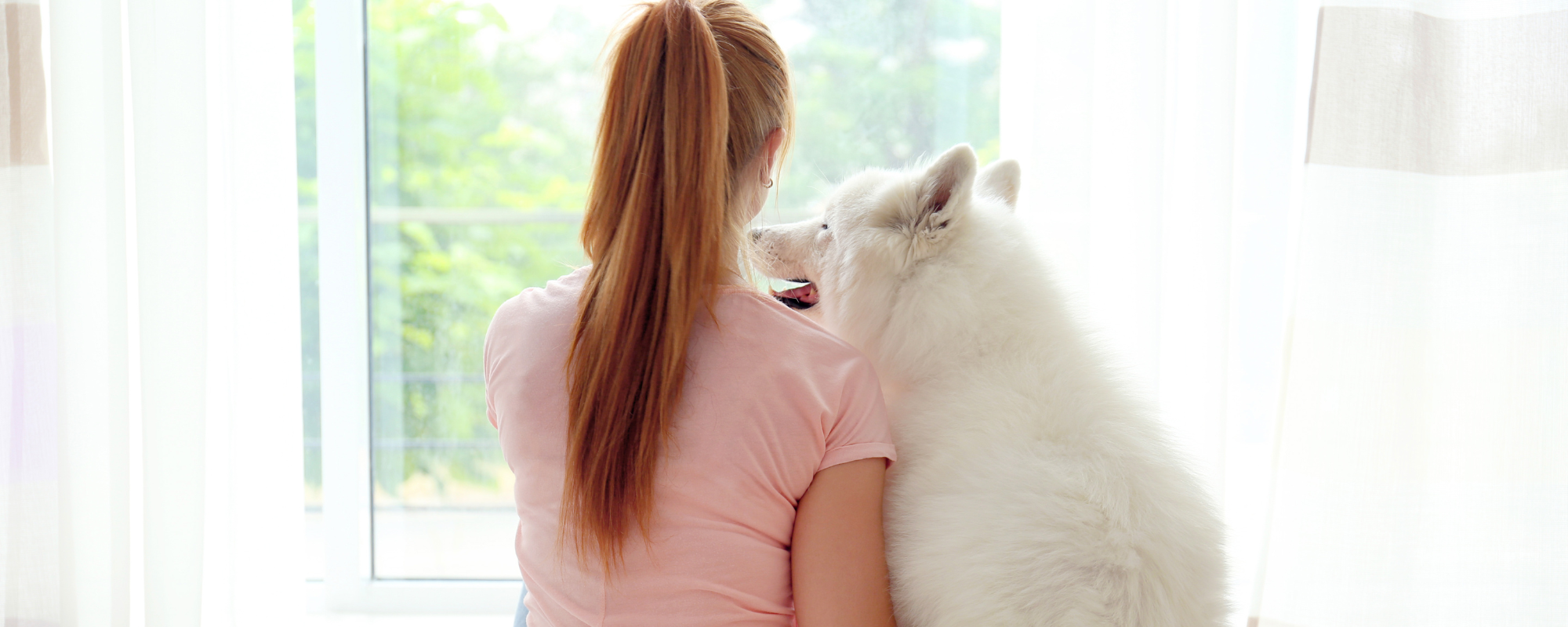
Once you are settled into your new home, you must give your dog lots of assurance that all is well in the world – especially if they feel out of their depth in their new house.
Here are more tips to make your dog feel right at home, as he should be.
1. First things first: Ensure that you dog-proof your home immediately
Whether you have a small pup that can hardly reach the kitchen counter or a big dog that can quickly help himself with whatever is left on the dinner table, it is essential to keep temptation far away.
Remember that your dog knows the rules you had in your old home but will need to learn the ropes anew in your current house.
So, keep any objects that are easy to reach out of the way. Should your dog try to get anything that he shouldn’t, gently remind him that he is not allowed to.
Be aware that other items, such as cleaning supplies or non-food items that look tempting to chew could be dangerous if your dog comes in contact with them. Lock these items away or pack them in cupboards or drawers your dog won’t likely open.
Consider installing a small safety gate if there are any areas of your home that your dog is not allowed to enter, such as the nursery or kitchen. If he tries to jump over, be firm but kind in reminding him that he cannot enter.
Keep your dog’s “bathroom” routine in mind, too. Smaller dogs that are comfortable with and used to using a doggy door to go outside will need a similar exit in your new home. These little doors are usually easy to install, so make sure they are in place as soon as possible.
Once installed, you can show your dog where the little door is – be patient if they are initially unsure whether the new fixture is safe.
Bigger dogs must also get used to your new garden, so give them time to adjust.
Speaking of your home’s outdoor areas: If you have a pool, keep it covered with a safety net when not in use, as this will ensure your pets do not get close to the water.
Any gaps in fences also need to be fixed to keep four-footed escape artists from wanting to explore the neighbourhood.
2. Give them their own safe space
Just like your old house had a particular spot just for your dog, your new place needs to provide an area where he can take pride of place.
This could be a corner where his dog bed, toys, blankets, and other unique items could be placed. Avoid any proximity to cables, fireplaces, or other electrical outlets that could prove dangerous.
Preferably, avoid spaces with loud noises that could fuel your dog’s anxiety. Make sure your dog is calm and settled from the start.
Do keep in mind to give your dog some alone time as well. Let him enjoy lounging on his dog bed or favourite blanket, just as he would have at your previous home.
3. Stay home for the first few days
Leaving your dog alone at home just as you have moved in is not ideal. Try to be at home for those first couple of days to allow him to ease into his new environment and grow his confidence as he starts exploring his new home independently.
Give your dog lots of attention and reward him for good behaviour around the house.
If you need to run quick errands, ask a family member or trusted member to stay with your dog.
He will feel relaxed and have enough fun not to notice you are gone.
4. Provide lots of physical exercise
Exercise can be a great stress relief for dogs, so consider taking him on a long walk in the neighbourhood. Let him explore, sniff, and enjoy being active with his “dog parents”.
If a dog-friendly park is nearby, take your dog there for extra fun. It might just become his favourite place to visit in his new neighbourhood.
5. Do stick to old routines
Even dogs need structure in their lives, so make sure your dog’s and your family’s routines stay on track.
Go for walks with your dog when you and your family would typically have taken him out in your old neighbourhood.
Continue your routine of mealtimes, as well as when his dog bowl and water bowl are usually filled.
These tiny details can set your pup at ease and make life at his new home stress-free.
Final thoughts: Be patient and understanding
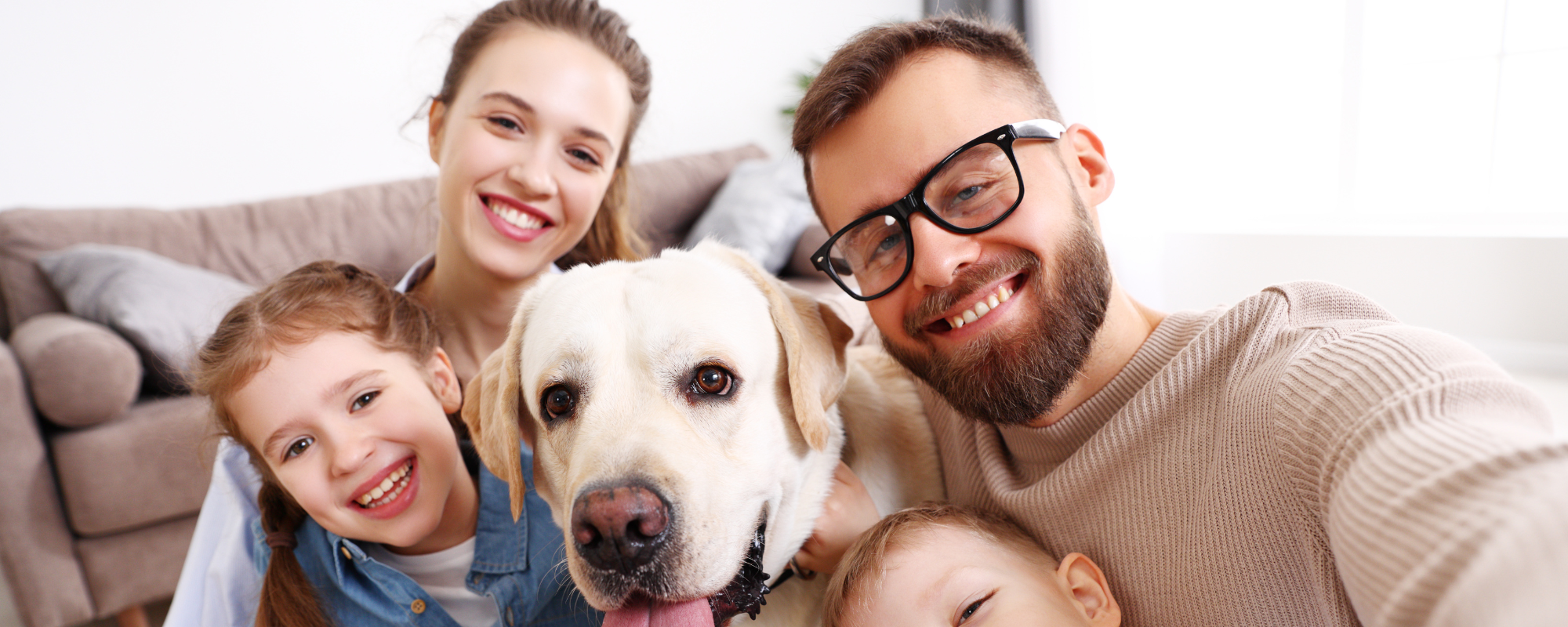
Moving with your dog will be a time of adjustment. Family members must be sensitive about any uncertainty your pup might have and spend time setting his nerves at ease.
Be mindful that the transition between homes needs to be managed from packing the first boxes to unpacking at your new home.
Create a positive association with each step of the process. Stay attuned to your dog’s behaviour to ensure any stress when moving with your dog can be gently managed.
Ultimately, both you and your fur pal can look forward to a new home environment where he will feel safe and loved.
